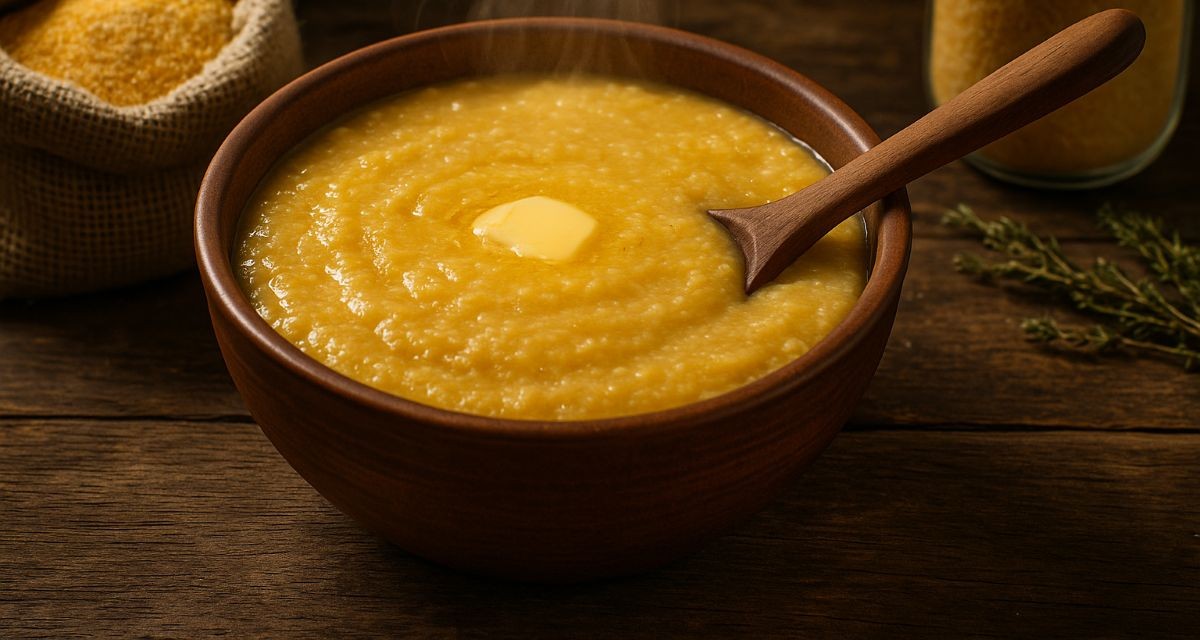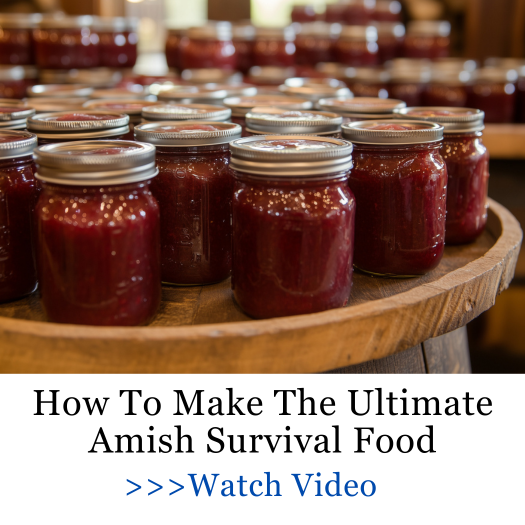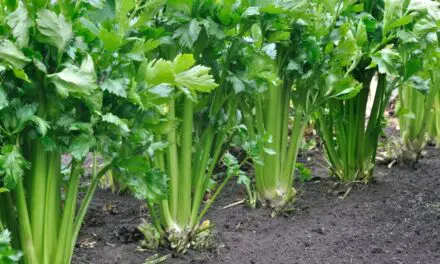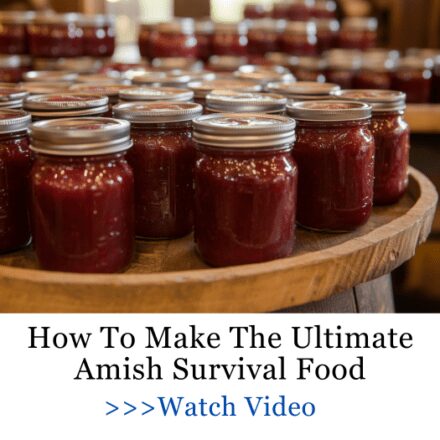Corn has been a survival food for centuries. Long before processed cereals and instant oats, families relied on cornmeal porridge for warmth, energy, and endurance. It’s cheap, versatile, filling, and—best of all—it can be made with the simplest tools and ingredients you already have on hand.
Whether you’re living off-grid, trying to stretch your pantry, or simply want to enjoy a hearty old-fashioned meal, corn porridge deserves a place in your kitchen.
Why Make Corn Porridge?
- Affordable & Accessible: Cornmeal is one of the cheapest staples you can stock, and it stores well in bulk.
- Nutrient-Dense: Packed with carbohydrates for energy, and often enriched with vitamins, cornmeal fuels hard work in the field or around the homestead.
- Comfort Food: Few things warm you up faster on a cold morning than a steaming bowl of porridge.
- Versatile: From sweet breakfast bowls to savory dinner sides, corn porridge adapts to any meal.
- Survival Staple: Requires nothing more than heat, water, and cornmeal—making it an ideal grid-down food.
When you rely on a food that’s been feeding people for centuries, you know you’re not gambling with trends. Corn porridge has always been a meal of resilience—something that fills bellies and keeps families strong even when luxuries disappear. That’s exactly why it still shows up in kitchens across the globe today.
Another reason to make corn porridge is its storage potential. A 25-pound sack of cornmeal can sit in your pantry for months if stored properly, and with each pound capable of making multiple servings, it’s a true food-security asset. When you invest in cornmeal, you’re not just buying food—you’re buying peace of mind.
Lastly, there’s the comfort factor. In uncertain times, food isn’t just fuel; it’s morale. A hot bowl of porridge can quiet anxiety, warm cold bones, and give your family the sense that—even if the world outside is chaotic—you’re still safe, nourished, and grounded.
How to Make Basic Corn Porridge
Ingredients:
- 1 cup cornmeal (medium or fine grind)
- 4 cups water (or milk for a creamier version)
- ½ teaspoon salt
Instructions:
- Bring 3 cups of water (or milk) to a boil in a pot.
- In a small bowl, mix the cornmeal with the remaining 1 cup of water. This slurry prevents lumps.
- Slowly pour the slurry into the boiling liquid, stirring constantly.
- Reduce heat and simmer 10–15 minutes, stirring often, until thick and creamy.
- Taste and adjust with more salt, butter, honey, or spices depending on preference.
That’s it. Three ingredients, one pot, and you’ve got a sustaining meal.
Variations Around the World
One of the beauties of corn porridge is how many cultures have their own take on it. You can borrow from these traditions or invent your own.
- Sweet Breakfast Bowl: Add honey, brown sugar, cinnamon, or fruit. This is perfect for children or as a comforting morning dish.
- Savory Southern Grits: Stir in cheese, butter, or cream, and serve with eggs or meat.
- Caribbean Cornmeal Porridge: Sweetened with condensed milk, flavored with nutmeg, vanilla, and cinnamon.
- African Pap or Ugali: Made thick and served as the base for stews and sauces.
- Polenta (Italian Style): Cooked slowly, often enriched with stock, then sliced and grilled or baked after cooling.
Each culture added its own flavor to porridge based on what was available locally. That’s a lesson for modern self-sufficiency: use what you have, and don’t be afraid to adapt. Corn porridge is a blank canvas, and your pantry is the paintbox.
Another benefit of variation is barter. In a crisis economy, being able to make not just plain porridge, but sweet Caribbean-style bowls or savory polenta, can turn a simple staple into a luxury. When everyone else is eating bland meals, your ability to flavor and reinvent porridge can make it valuable for trade.
Finally, experimenting with variations now ensures you’ll know what your family likes best. Survival food doesn’t have to mean suffering. If your kids love porridge with cinnamon and fruit, or your spouse prefers a cheesy, savory bowl, you can store the right extras today to make sure tomorrow’s meals aren’t just about calories, but enjoyment.
Tips for Making It Better
- Avoid Lumps: Always mix cornmeal with cold water before adding to boiling liquid.
- Cook Low & Slow: The longer you stir, the smoother the porridge.
- Flavor Stockpile: Keep a small stash of spices, dried fruit, or bouillon cubes to transform a basic bowl into something new.
- Leftovers Count: Cold corn porridge can be fried into cakes or baked as a side dish the next day. Nothing goes to waste.
One of the best tips is to treat porridge as more than a “one-and-done” dish. When you cook a large batch, think ahead about the second and third meals you can pull from it. Fried porridge cakes, baked casseroles, or even layered pies all start with that same basic pot of cornmeal.
Also, consider your cookware. A heavy-bottomed pot or cast iron Dutch oven makes a big difference, reducing scorching and giving your porridge a creamier finish. When you’re cooking over open flame or a woodstove, the right pot keeps your food from burning and your patience intact.
Lastly, don’t underestimate the power of seasoning. A pinch of salt transforms bland mush into something satisfying, and the smallest amounts of butter, garlic, or even powdered bouillon can completely change the dish. In survival, small comforts like flavor are not trivial—they’re fuel for morale.
Final Thoughts
Corn porridge is more than a budget food—it’s a survival food. It proves that with a little patience and creativity, even the humblest ingredients can become a satisfying meal. Stock cornmeal in your pantry, learn a few variations, and you’ll always have a warm, filling option when times get lean.
It’s also a bridge between cultures and centuries. From Native American traditions to African pap, from Southern grits to Italian polenta, porridge shows how one staple can anchor entire communities. That kind of staying power matters in a world where modern food systems feel shaky.
Most importantly, corn porridge teaches you to see abundance where others see limits. A single sack of cornmeal isn’t just calories—it’s breakfasts, dinners, barter, and comfort. If you can turn a handful of ground corn into multiple meals, you’re already practicing self-sufficiency.
A Resource Worth Having
If you want to go deeper into forgotten foods like this, I strongly recommend checking out The Lost Superfoods. Inside, you’ll find 126 recipes and preservation techniques our ancestors relied on to survive wars, depressions, and famines—long before refrigeration or supermarkets.
Corn porridge is just the beginning. This book shows you how to build an entire survival pantry filled with dishes that keep for months or even years, while delivering real nutrition. These are the foods that win when everything else fails.
👉 Get your copy of The Lost Superfoods today, and give your family the same security and resilience that past generations depended on.
Canning Potatoes: A Self-Reliant Staple for Your Pantry
The 10 Wild Foods That Saved Me When I Was Homeless (Video)
Why You SHOULD Leave Your Food Out in the Sun
How to Make Long-Lasting Flour from Wild Grains, Seeds, Nuts and Bark














